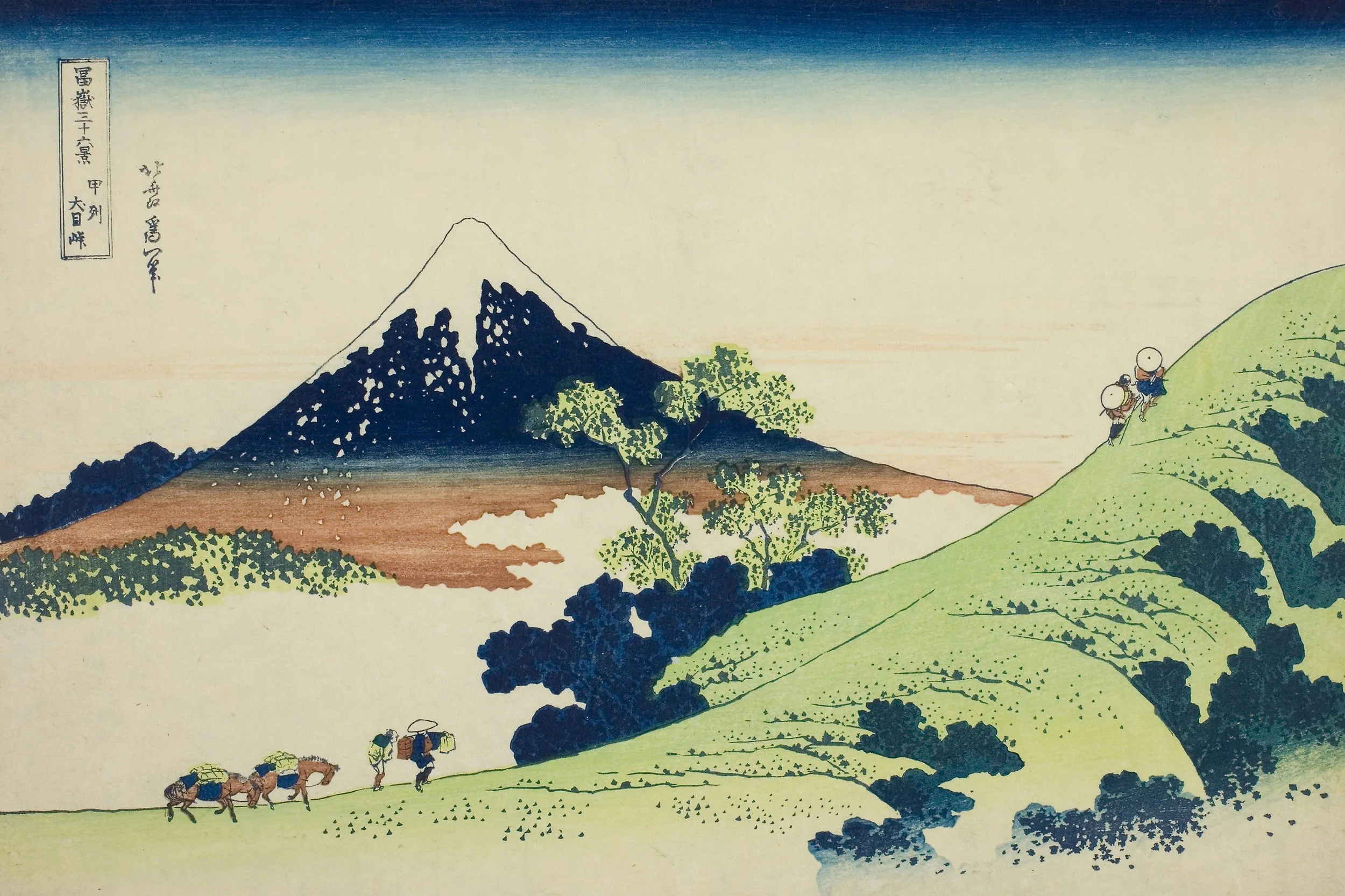5.Fujimigahara in Owari Province 尾州不二見原
Bishu Fujimihara – now known as Fujimi-cho, Naka Ward, Nagoya City – was once a renowned scenic spot lined with pleasure quarters and samurai retreats. However, it was not particularly famous as a barrel-producing region.
In Bishu, sake brewing flourished, and many coopers were active. Hokusai collaged these barrel craftsmen in neighboring cities into a famous scenic location.
Hokusai did not simply paint what he saw.
Large barrels were used for storing and transporting sake and soy sauce. He was likely captivated by their unique form.
The large barrel reaches toward the sky, yet the cooper, wielding a yari-ganna (spear plane), serves as a counterweight, anchoring it to the ground. Inside the barrel’s circular frame, a small Mount Fuji can be seen.
The barrel acts as a lens, guiding the viewer’s gaze toward both the craftsman and Fuji.
Hokusai, who favored asymmetry, incorporated the perfect symmetry of a circle. Yet, a circle alone would render the composition rigid.
To soften the structure, he placed an organically shaped pine tree on the left. This subtle addition plays a crucial supporting role in the overall composition.
Every element in the composition is meticulously calculated.
Herein lies Hokusai’s discerning eye for beauty.
03
6.Inume Pass in Kai Province 甲州犬目峠
Kōshū Inume Pass
Even though Inume Pass is said to be near Inume-juku on the Kōshū Road, in present-day Uenohara City, Yamanashi Prefecture, searching for Inume Pass today, one cannot find this exact scenery.
Hiroshige depicted Inume Pass as steep, while Hokusai portrayed it as gentle.
Hokusai does not depict things exactly as he sees them.
The scenery within his ukiyo-e prints is the true reality.
Foreground: The slope of the pass
Middle ground: Mist rising from the Katsura River and broadleaf trees
Background: Mount Fuji
The central broadleaf tree is enormous—perhaps a maple or a sawtooth oak—easily reaching 100 meters in height.
Yet, Hokusai deliberately does not extend its trunk down to the slope of the pass.
He does not want the tree trunk to cut across the gentle slope,
for this smooth, flowing incline is the main subject of the composition.
At the same time, the sheer size of this deciduous tree is essential.
If it were depicted any smaller, the composition would feel incomplete and unbalanced.
Hokusai prioritizes compositional harmony over realistic proportions.
No matter how much one searches for Inume Pass, this scenery cannot be found—
because it exists within Hokusai’s mind.
A vision beyond reality.
Herein lies Hokusai’s discerning eye for beauty.

